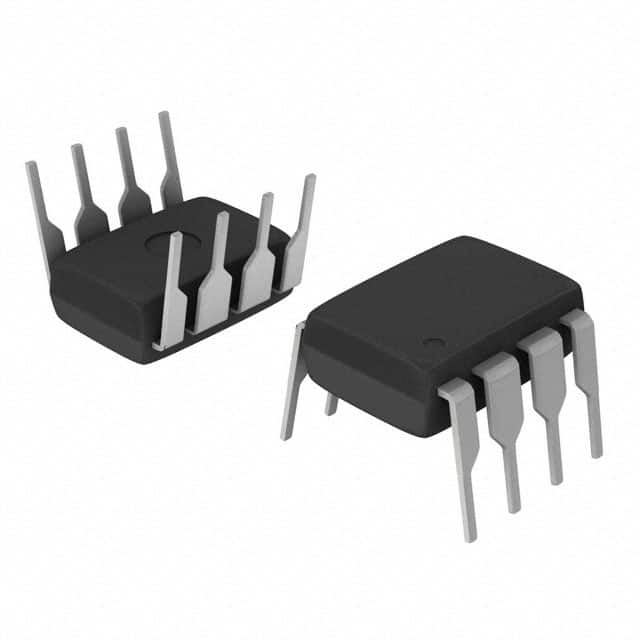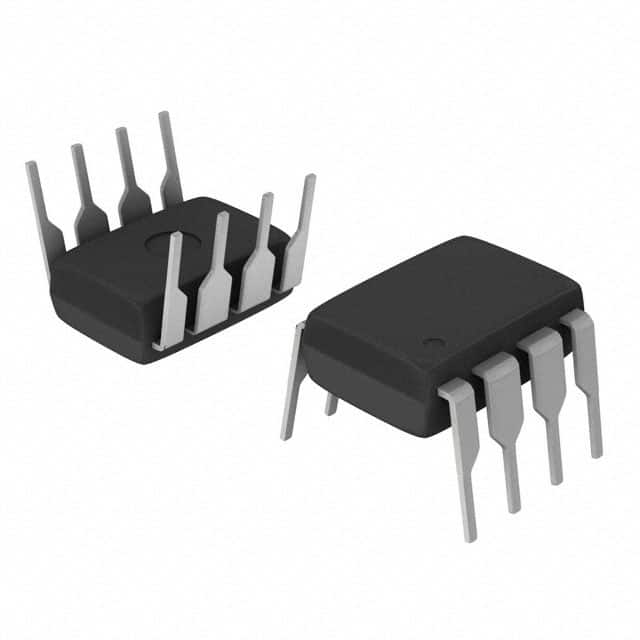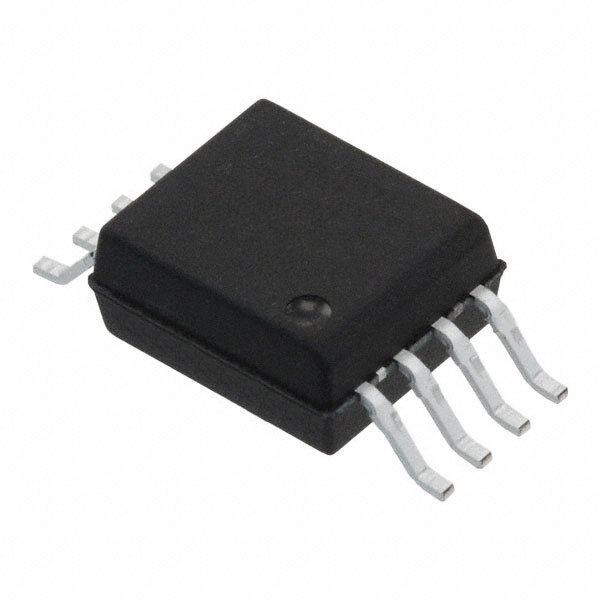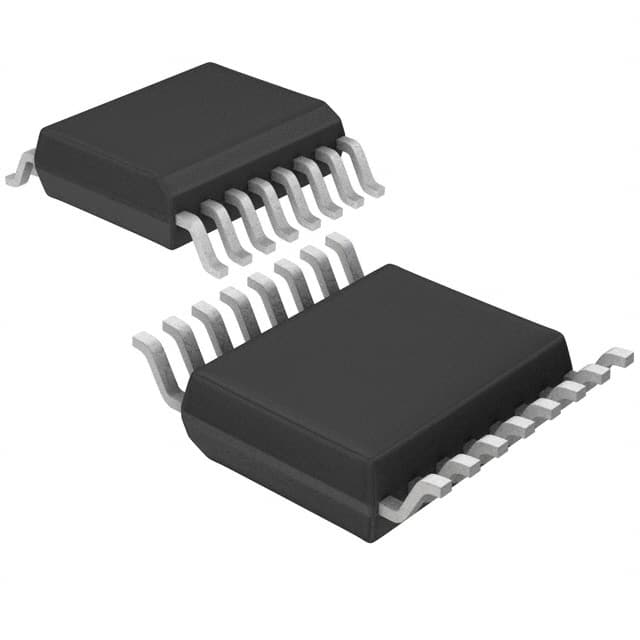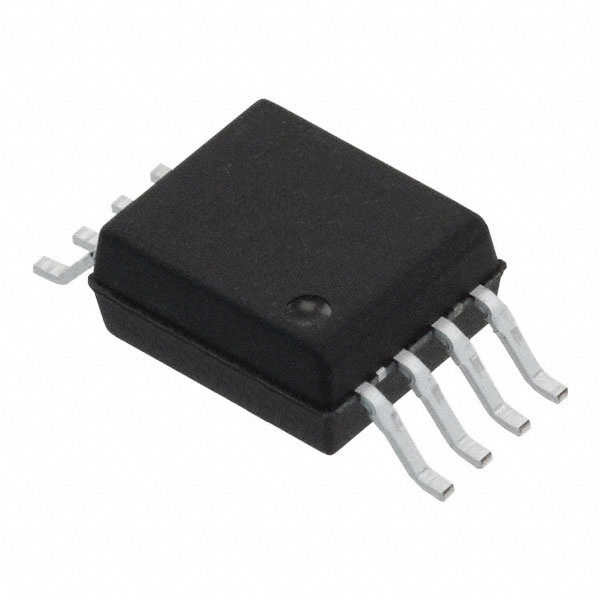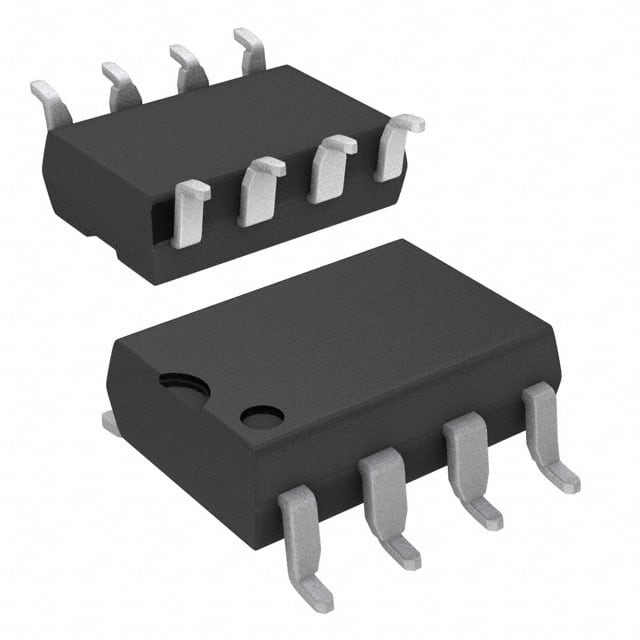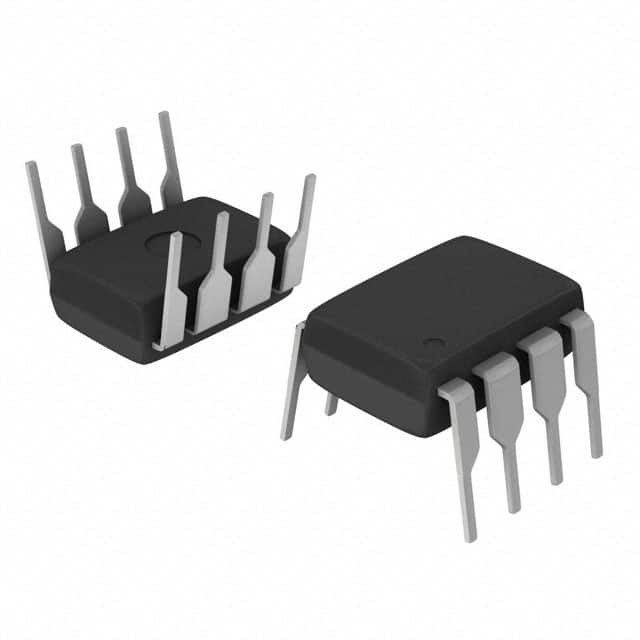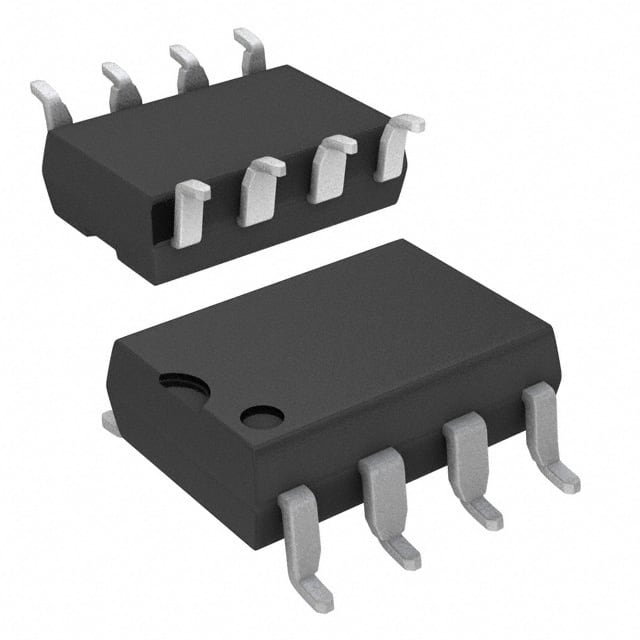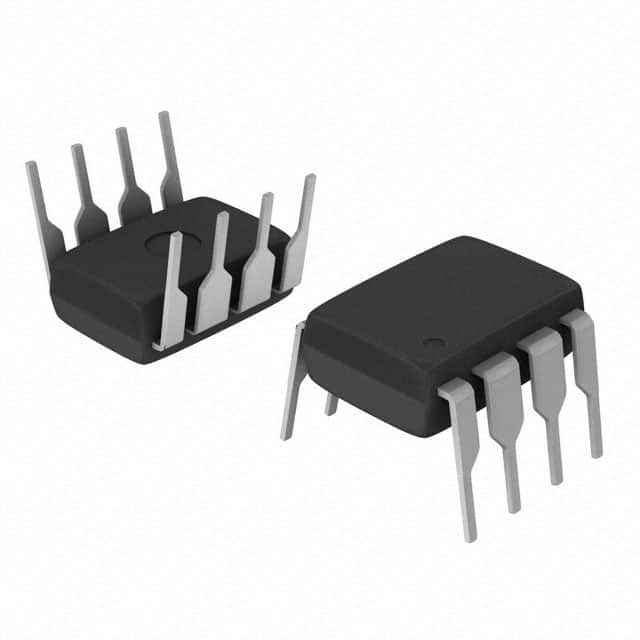Broadcom launches new Wi-Fi 7 chip ic for routers and mobile phones, technical comparison of Wi-Fi 6 VS Wi-Fi 7
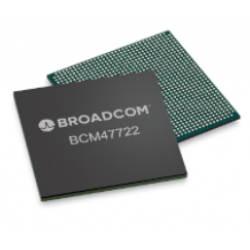
Broadcom launches new Wi-Fi 7 chip ic for routers and mobile phones, technical comparison of Wi-Fi 6 VS Wi-Fi 7
With the continuous advancement of technology, the field of wireless communication is also experiencing rapid development. Wi-Fi 6 (802.11ax) and Wi-Fi 7 (802.11be), as the most eye-catching Wi-Fi technology standards in recent years, have brought us an unprecedented communication experience. This article will compare the characteristics of these two technologies in detail for you.

transfer speed:
Wi-Fi 6: The biggest highlight of Wi-Fi 6 is its high speed. Compared with the previous Wi-Fi 5 (802.11ac), its transmission speed has increased by about 37%. Wi-Fi 6 can reach a maximum transmission speed of 9.6 Gbps. Although this speed is limited by many factors in actual use, it is still significantly improved compared to the previous generation.
Wi-Fi 7: The expected maximum speed of Wi-Fi 7 is even more impressive, theoretically reaching 30 Gbps, which means that it will be about three times faster than Wi-Fi 6.
Delay:
Wi-Fi 6: By introducing technologies such as OFDMA and BSS Coloring, Wi-Fi 6 significantly reduces network latency, bringing a better experience to low-latency applications such as online games and video calls.
Wi-Fi 7: Wi-Fi 7 further reduces latency and is expected to achieve true millisecond latency, which will be very beneficial for real-time applications, especially virtual and augmented reality.
Connection stability and range:
Wi-Fi 6: Wi-Fi 6 significantly enhances device battery life and connection stability through Target Wake Time (TWT) technology. At the same time, its MU-MIMO technology has also been further enhanced, from 4x4 in Wi-Fi 5 to 8x8, which allows more devices to connect and enjoy high-speed Wi-Fi at the same time.
Wi-Fi 7: It is expected that Wi-Fi 7 will further optimize the above characteristics, and will have stronger penetration and longer coverage, especially outdoors and in buildings.
Frequency band and bandwidth:
Wi-Fi 6: Wi-Fi 6 supports dual frequency bands of 2.4GHz and 5GHz, and introduces a bandwidth of 160MHz.
Wi-Fi 7: Wi-Fi 7 is expected to support the new 6GHz frequency band and may further increase the bandwidth.
safety:
Wi-Fi 6: Wi-Fi 6 introduces WPA3 encryption, which provides stronger security than WPA2.
Wi-Fi 7: Wi-Fi 7 is expected to continue to strengthen network security and provide more security features.
In general, Wi-Fi 7 will bring higher transmission speeds, lower latency, better connection stability and coverage on the basis of Wi-Fi 6, and may also have higher security standard. However, which technical standard to choose depends on the actual needs of individuals or organizations.
Chips used in Wi-Fi 7, application fields, manufacturers
Wi-Fi 7, officially named IEEE 802.11be, is the latest wireless communication standard after Wi-Fi 6 and Wi-Fi 6E. Wi-Fi 7 is not just an increase in speed, but a comprehensive optimization and innovation in response to the increasing demand for wireless data and various application scenarios.
Technical Features:
Enhanced speed: Wi-Fi 7 is expected to deliver speeds of tens of Gbps per second, which is several times that of Wi-Fi 6.
Lower Latency: Optimized technologies such as Target Wake Time (TWT) can further reduce network latency, making it more suitable for real-time applications such as cloud gaming and AR/VR.
Sophisticated MU-MIMO technology: Wi-Fi 7 can serve more devices simultaneously, further increasing the overall efficiency and capacity of the network.
Enhanced spectrum utilization: More and wider frequency bands are used, as well as optimized channel utilization technology, which enhances the concurrent performance and signal penetration of the network.
Application fields:
Smart Home: As the number of smart home devices increases, Wi-Fi 7 can provide stable connections for more devices.
AR/VR: Lower latency and higher data rates provide a better user experience for augmented reality and virtual reality applications.
4K/8K Video Streaming: Wi-Fi 7 can easily support seamless streaming of high-resolution video.
Public hotspots: In shopping malls, airports, and other public places, Wi-Fi 7 can provide high-speed connections to large numbers of users.
Industrial automation: Wi-Fi 7 provides high-speed, low-latency connectivity for industrial equipment, meeting the needs of Industry 4.0.
Major manufacturers:
Qualcomm (Qualcomm): As a leading supplier of mobile communication chips, Qualcomm has accumulated rich experience in the Wi-Fi field.
Broadcom: Historically, it has been a leading manufacturer of Wi-Fi technology, and they continue to invest in the new generation of Wi-Fi 7 technology.
Intel (Intel): In addition to chips in the PC and server fields, Intel also provides Wi-Fi chips for mobile devices and routers.
MediaTek: This company provides Wi-Fi solutions for a variety of products in the smart home and mobile device space.
In conclusion, Wi-Fi 7 is expected to become the next-generation wireless communication standard due to its excellent performance and multiple application scenarios. As the technology continues to mature and devices are widely deployed, consumers can expect a faster and more stable wireless connection experience. Wi-Fi 7 chips, application areas, and manufacturers
Wi-Fi 7, officially named IEEE 802.11be, is the latest wireless communication standard after Wi-Fi 6 and Wi-Fi 6E. Wi-Fi 7 is not just an increase in speed, but a comprehensive optimization and innovation in response to the increasing demand for wireless data and various application scenarios.
Technical Features:
Enhanced speed: Wi-Fi 7 is expected to deliver speeds of tens of Gbps per second, which is several times that of Wi-Fi 6.
Lower Latency: Optimized technologies such as Target Wake Time (TWT) can further reduce network latency, making it more suitable for real-time applications such as cloud gaming and AR/VR.
Sophisticated MU-MIMO technology: Wi-Fi 7 can serve more devices simultaneously, further increasing the overall efficiency and capacity of the network.
Enhanced spectrum utilization: More and wider frequency bands are used, as well as optimized channel utilization technology, which enhances the concurrent performance and signal penetration of the network.
Application fields:
Smart Home: As the number of smart home devices increases, Wi-Fi 7 can provide stable connections for more devices.
AR/VR: Lower latency and higher data rates provide a better user experience for augmented reality and virtual reality applications.
4K/8K Video Streaming: Wi-Fi 7 can easily support seamless streaming of high-resolution video.
Public hotspots: In shopping malls, airports, and other public places, Wi-Fi 7 can provide high-speed connections to large numbers of users.
Industrial automation: Wi-Fi 7 provides high-speed, low-latency connectivity for industrial equipment, meeting the needs of Industry 4.0.
WiFi 6 vs 6E vs 7 Explained: Real-World Speed Testing
Broadcom unveils new Wi-Fi 7 chip combo for routers and phones
Broadcom Inc. has introduced three new Wi-Fi 7 chips that can be used to equip routers and phones with wireless networking capabilities.
Wi-Fi 7 is the latest version of the wireless networking technology of the same name. It can deliver up to 46 GB per second of bandwidth, double the previously supported maximum bandwidth. The technology also promises to significantly reduce connection latency.
"By adding these three new products, Broadcom enables its customers to build a diverse portfolio of high-performance Wi-Fi 7 products across a broad range of markets," said Vijay Nagarajan, Broadcom's vice president of wireless communications and connectivity marketing.
The first two Wi-Fi 7 chips from Broadcom, the BCM6765 and BCM47722, were designed for use in networking equipment. The former chip is optimized to power home routers. The BCM47722 targets access points, the networking devices that businesses use to provide Wi-Fi connectivity in offices.
The two chips have a similar design. Both feature a quad-core central processing unit based on Arm Ltd.'s processor architecture of the same name. Additionally, both the BCM6765 and BCM47722 include two built-in radios for sending data over a wireless connection.
The chips also include a number of supporting components, according to Broadcom. These components are designed to improve the reliability of a user's Wi-Fi connection.
Wireless signals are weakened as they travel within the router's circuits or wirelessly to the user's cell phone. Therefore, the signal usually has to be enhanced before it can be processed. Broadcom's new chip includes a built-in power amplifier that boosts incoming data transmission for easier processing.
When a Wi-Fi signal passes through components such as power amplifiers, its quality sometimes degrades, which can cause network problems. Routers use a technique called digital predistortion to mitigate such errors. Broadcom's new Wi-Fi 7 chips can delegate the task of performing digital pre-distortion to an external component called a front-end module, an arrangement the company says can reduce power consumption.
The set of radio frequencies that a phone uses to send data to a Wi-Fi router is called a channel. The speed of data transfer is measured using a metric called channel width. Wi-Fi 7 offers twice the channel width of previous-generation Wi-Fi 6E technology, or 320 MHz, which is one reason for its faster speeds.
Broadcom says its BCM6765 and BCM47722 chips both support 320 MHz Wi-Fi connections. They also support multi-link operation, another enhancement introduced with Wi-Fi 7. The technology speeds up connections by allowing devices to transmit data over multiple channels, or sets of frequencies, instead of just one as before.
Broadcom's two new chips share many core features, but not all. The BCM47722 is a chip that powers enterprise-class Wi-Fi access points and provides several features not included in the consumer-oriented BCM6765.
The enterprise-oriented BCM47722 not only supports Wi-Fi 7, but also supports many other networking protocols, including Bluetooth Low Energy, Thread, and Zigbee. Like Wi-Fi 7, these three protocols enable devices to transmit data wirelessly. But they use much less power, making them better suited for low-power connected devices like industrial sensors.
The BCM47722 is also forward compatible with upcoming Bluetooth channel detection technology, Broadcom said. As part of the Bluetooth wireless protocol, the latter technology will make it possible to determine the location of connected devices with high precision. It is designed for use cases such as tracking the location of fulfillment center warehouse robots.
The third chip that Broadcom introduced today is called the BCM4390 . It's not designed to power routers, but smartphones and tablets. Phone makers can use the chip to add Wi-Fi 7 support to their devices.
Broadcom said, BCM4390 also supports Zigbee and Threat low-power wireless network technology. In addition, it is compatible with both versions of the Bluetooth wireless protocol. The chip supports the standard version of the technology as well as Bluetooth Low Energy, a more power-efficient implementation optimized for tasks like syncing data between a user's phone and smartwatch.


In addition, Broadcom is a world-leading semiconductor company that provides products for wired communications, wireless communications, enterprise storage and industrial markets. The following are the 20 main chips and their functions commonly used by Broadcom in communication equipment. It should be noted that the product series provided by Broadcom is very large, and this list is only a part of it:
BCM4366 - 4x4 802.11ac Wave 2 Wi-Fi chip with MU-MIMO support.
BCM2837 - 64-bit ARM Cortex-A53 chip for Raspberry Pi 3.
BCM43438 - Wi-Fi + Bluetooth chip for Raspberry Pi 3.
BCM57810 - 10Gb Ethernet controller for server and storage applications.
BCM56960 - 25/100Gb Ethernet switch chip for data center switches.
BCM43455 - Single chip 5G Wi-Fi (802.11ac) solution.
BCM53125 - Gigabit Ethernet switch for home and small office networks.
BCM20702 - Bluetooth 4.0 single chip solution.
BCM63138 - Dual-core ARM chip for DSL terminal solutions.
BCM33843 - DOCSIS 3.0 Cable Modem Solution.
BCM47755 - Dual-frequency GPS receiver for enhanced location accuracy.
BCM53570 - Multiport Gigabit Ethernet switch for home and business networks.
BCM43569 - 2x2 Wi-Fi + Bluetooth combo chip with 802.11ac support.
BCM75839 - Low-mid-end STB SoC for streaming media players and OTT solutions.
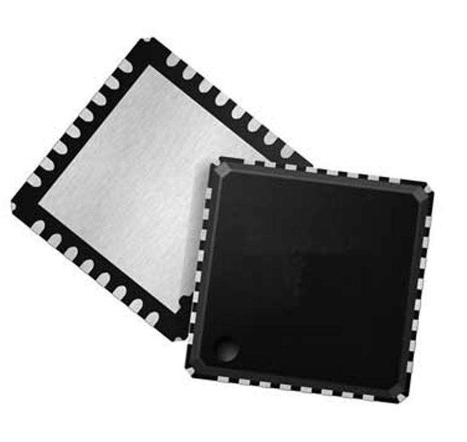
Chip ICs used for communication equipment include:
NL88659HG12600B, BCM88675CB0KFSBG, BCM52311A1HH0H275S, BCM88375CB0KFSBG,
BCM88375CB0KFSBG , BCM88378CB0KFSBG , USB3380-AB50NI G ,BCM88359CUBGT ,
BCM88361A0IFSBLG ,BCM88378CB0KFSBG ,BCM88460A0IFSBG ,BCM88470CB0IFSBG ,
BCM88471CB0IFSBG , BCM88552B1KFSBLG ,BCM88560A0KFSBG ,BCM88562A0KFSBG ,
BCM88650B1KFSBLG ,BCM88660A0KFSBG , BCM88664A0KFSBG ,
etc. Broadcom chip ICs are available on the official website of jinftry Sales,
and the price advantage is obvious.
In addition, some datasheets of Broadcom chip ICs can also be found in the official site found.
Some questions about using Broadcom chip IC:
Why hasn't Broadcom released some chip IC datasheets?
Broadcom, like many other large semiconductor manufacturers, considers a variety of factors when deciding whether to make its chip IC data sheets public. The following are possible reasons why Broadcom does not make certain chip datasheets public:
Trade secrets: Highly specialized and high-performance chips often contain valuable patents and technological innovations. Disclosing too many details could give competitors the opportunity to copy or closely reproduce the technologies.
Custom Products: Chips designed by Broadcom for certain large customers may be custom. These customers may not want the technical details of their custom chips to be made public.
Security: Some chips are designed for specific security applications, such as payment, encryption, etc. Disclosing data sheets for these chips could raise security concerns.
Restricted Applications: Some products may be designed and sold for specific applications or markets only. In order to control the use of products, Broadcom may decide not to disclose comprehensive data on these chips.
Marketing Strategy: Sometimes, keeping certain information confidential can be used as a marketing strategy to maintain a product's unique position.
Broadcom released those chip IC data sheets?
General Products: Products that are mass-market and used by a wide range of engineers and developers tend to have public datasheets.
Legacy Products: Some past products, especially those that no longer have a significant competitive advantage, may have public datasheets.
Educational and R&D Uses: Broadcom may provide detailed data on certain chips for educational and R&D purposes.
Broadcom chip IC data sheet there?
Official Website: Visit Broadcom's official website and look for a specific IC data sheet in its product or support section. Usually, most chip manufacturers provide technical datasheets of related products on their official websites.
Distributor websites: Some electronic component distributors, such as Digi-Key, Mouser, Arrow, and jinftry, often provide relevant technical information and data sheets for the listed components.
Technical forums and communities: From time to time, related technical forums or communities also share or discuss datasheets for a particular chip.
Contacting Broadcom Sales or Technical Support: If you cannot find the information you need in public sources, try contacting Broadcom's sales or technical support teams directly and they may be able to provide you with the required datasheet or direct you to the correct resource.
Please note that when accessing or using data sheets, you should ensure that you follow the relevant copyright and terms of use and do not violate any intellectual property rights.
edit author:

Jinftry(Hong Kong registered company name: JING FU CAI (HONGKONG) INTERNATIONAL CO., LIMITED) was established in 2013, headquartered in Hong Kong, China, with a branch in Shenzhen, China. It is a global supplier of electronic components and a well-known and competitive electronic product distributor in Asia. Is also an excellent strategic partner of global ODM/OEM/EMS, able to quickly find authentic and traceable electronic components for customers to purchase.

